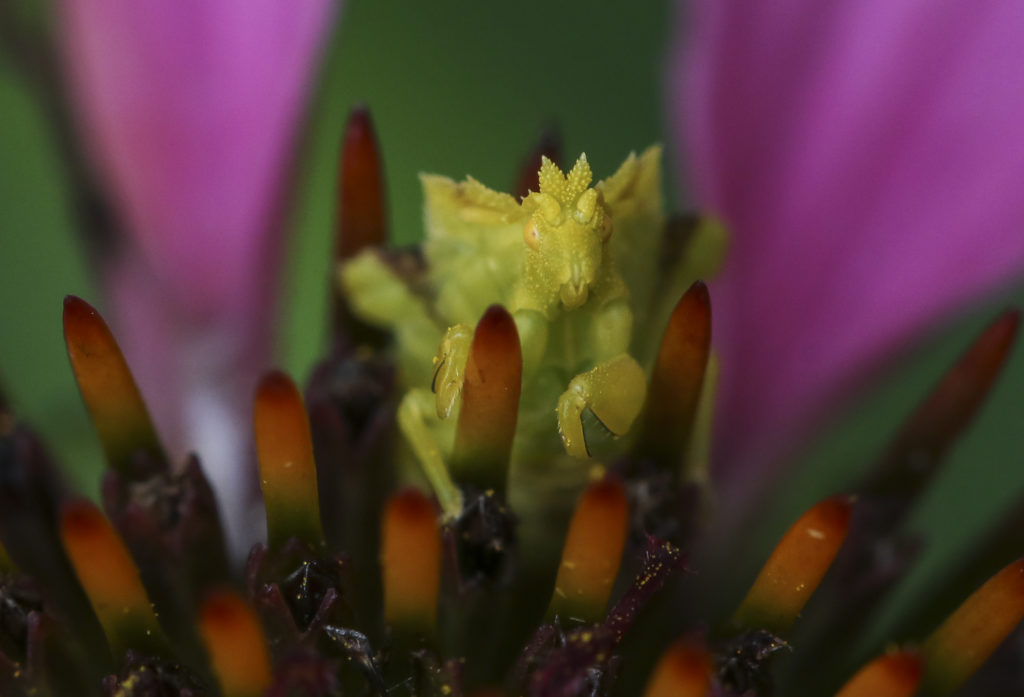Up Close With Tiny Monsters

By Wayne Bierbaum
Since the weather has recently been unpleasantly hot and humid, I have been spending less time carrying a large lens on forest walks and have focused on looking for interesting small things around my yard. (I go biking for exercise though.)
As I go exploring with a macro lens, I find some really strange tiny creatures. Besides the aphids herding ants (see last week’s Creature Feature), I have found: a wasp carting off caterpillars to feed its young; a male orb spider trying to mate with a huge, in comparison, female; and a small Carolina praying mantis (a native bug) picking off flies attracted to sap leaking out of an injured rain tree.
The strangest and meanest-looking creature I found was something from which the original Godzilla must have been modeled. The bug was a tiny green speck on a coneflower when I saw it but once magnified, it was a mean-looking beast.
It was a jagged ambush bug. Most of its life is spent waiting for some fly or moth to get close enough to be grabbed. The bug was tiny: only 6 millimeters long. Of the 30 or so species of jagged ambush bugs in North America, all are smaller than one-half inch. They possess two mantis-like front legs adorned with spines that they use to clamp onto prey. The back two pairs of legs have large claws to firmly anchor them while the prey struggles. The lethal blow comes from its javelin-shaped beak, which it buries into the victim and injects a powerful toxin. The jagged ambush bug then feeds on the fluid it drains. They are known to kill prey many times its size and I’m glad that they do not come in the size of a cat.
The Missouri Department of Conservation says the little bug could deliver a painful sting and they should be brushed off and not smashed against your skin.
They are commonly found in fields of wildflowers and are almost always found near bees, flies and butterflies. Although they have wings, they fly poorly and tend to crash land. They over-winter in barrel-shaped eggs and emerge looking like an adult. Ambush bugs may have several breeding cycles in the summer and peak in numbers in early fall.
Because of their size and secretive nature, the jagged ambush bug is rarely seen. They may be responsible for some of the stings or painful bug bites that occur in flower gardens and fields. They are related to assassin bugs—both are in the Reduviidae family but differ by having hooked forelegs and short-clubbed antennae. Assassin bugs, like ambush bugs, have a poison beak.
One species of reduviid bugs in South America like drinking from the corner of sleeping mammals’ eyes and can transmit the parasite that is responsible for the deadly Chagas disease in humans.
As I study the small bugs that live in my garden, I am glad that bugs, like this Godzilla bug, don’t come in large sizes. Sometimes the strangest things come in the smallest packages.
